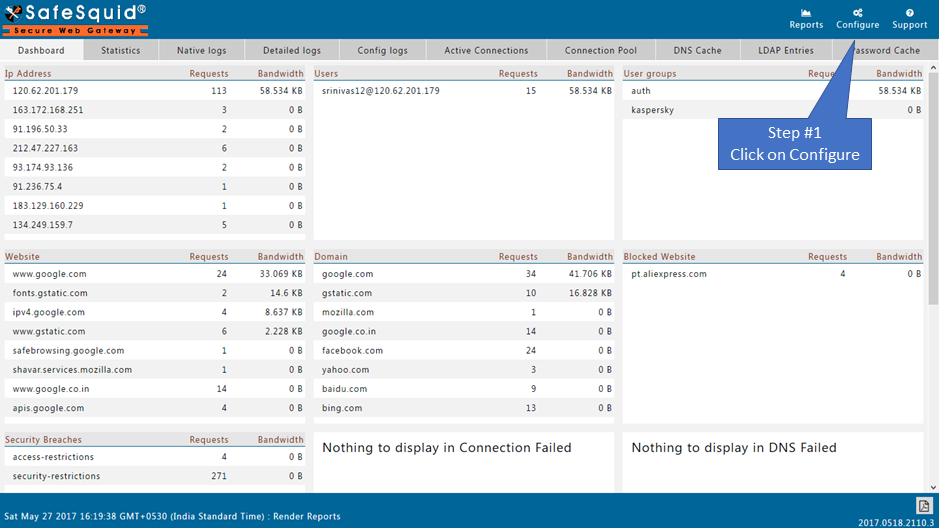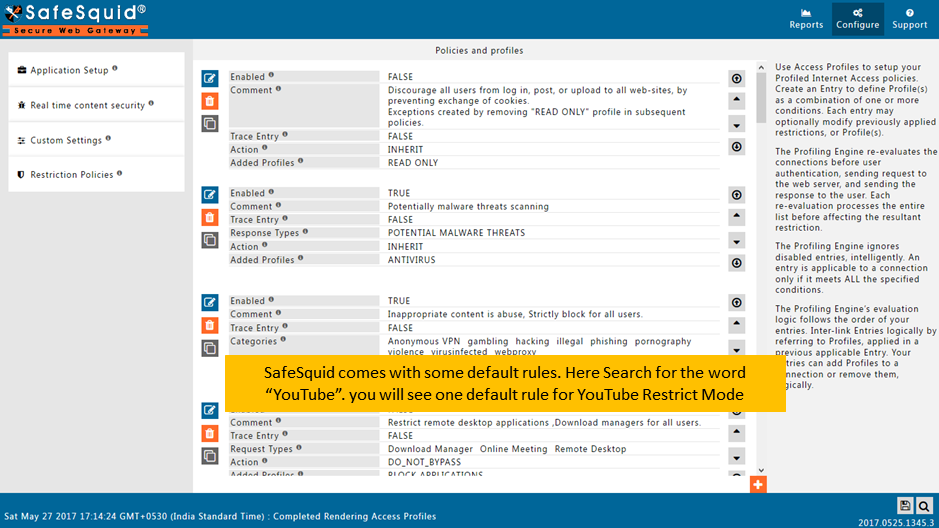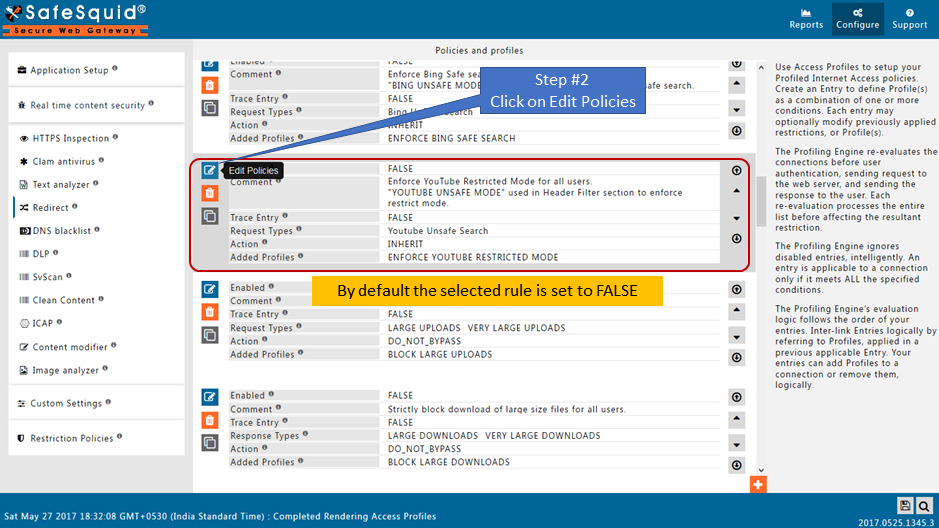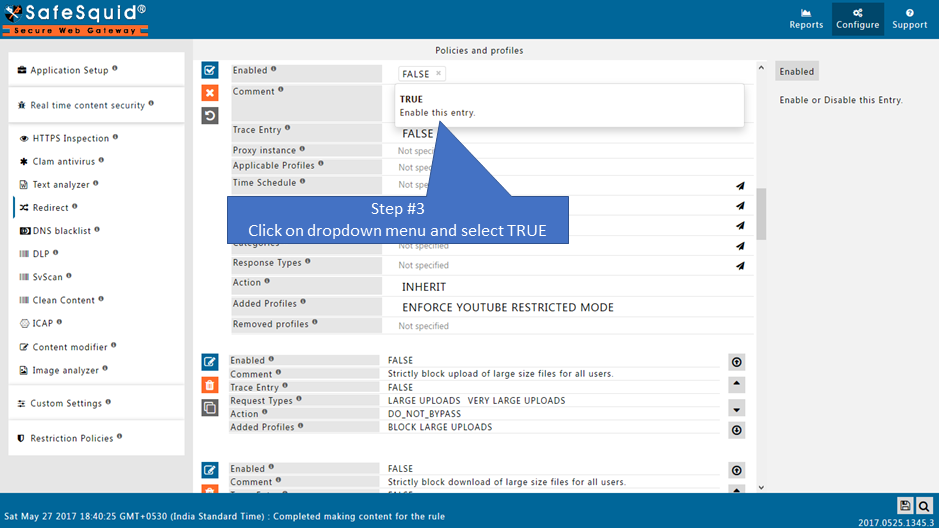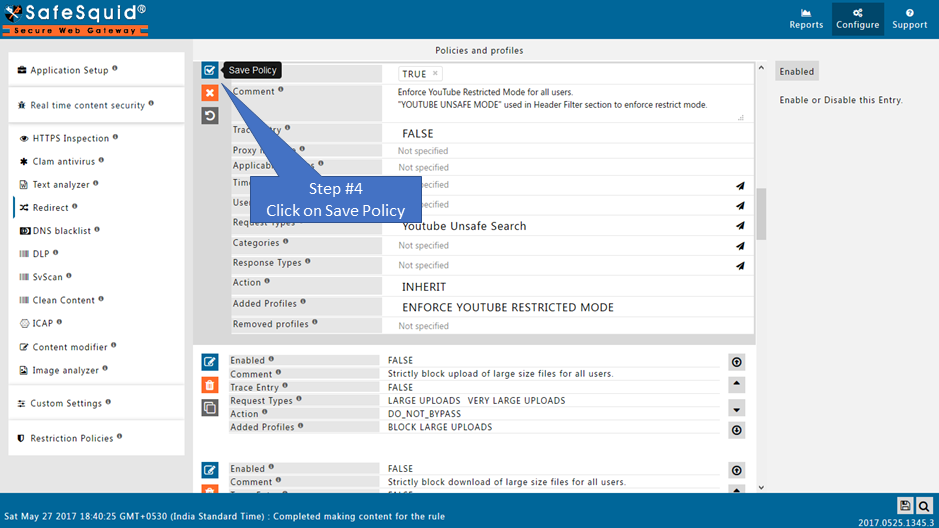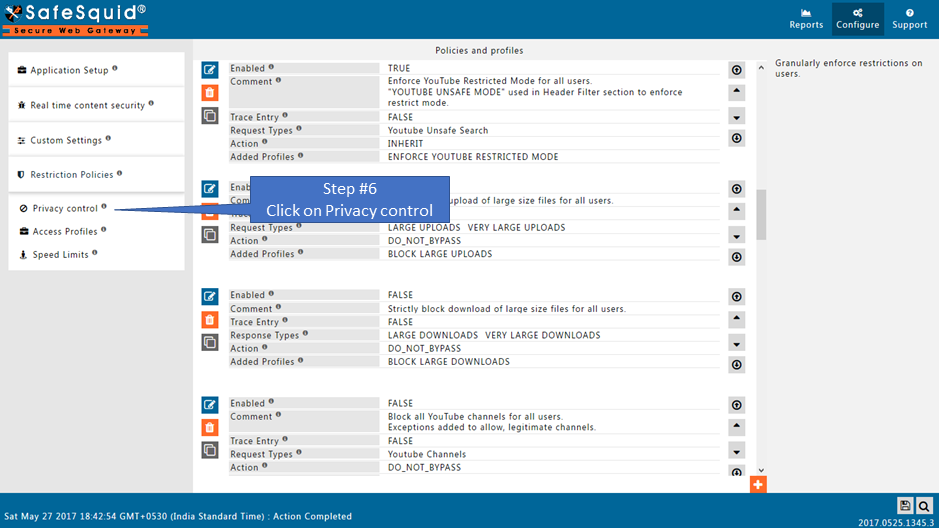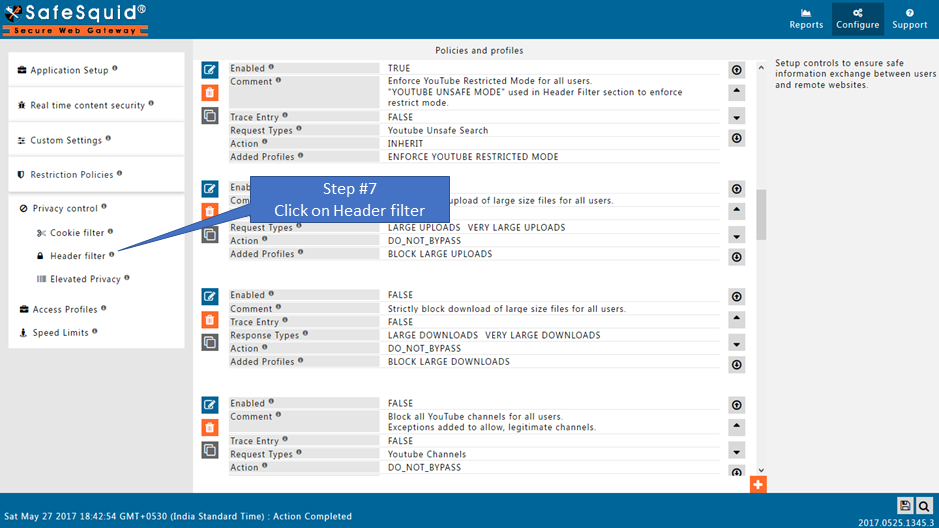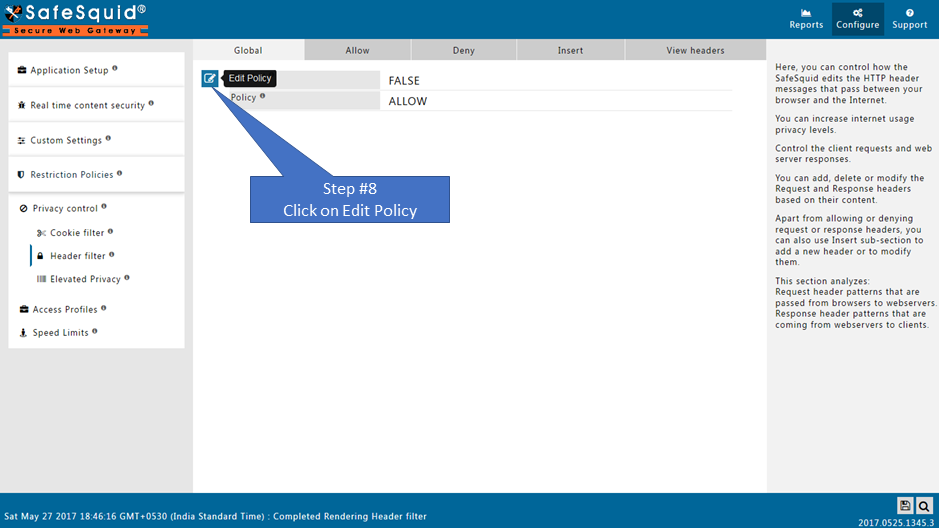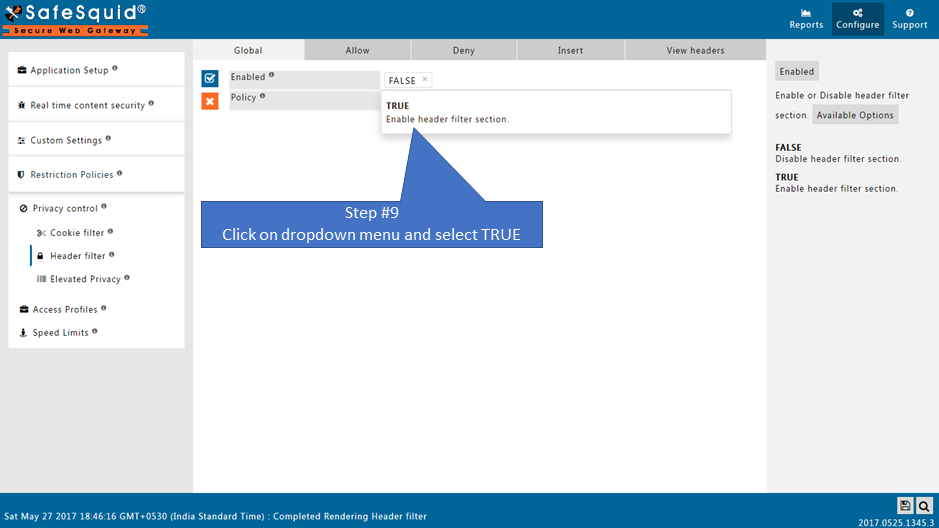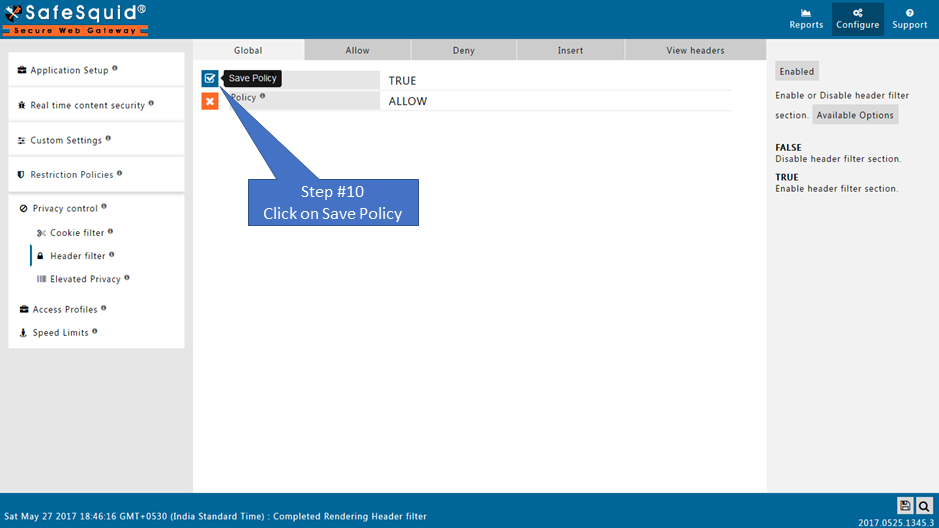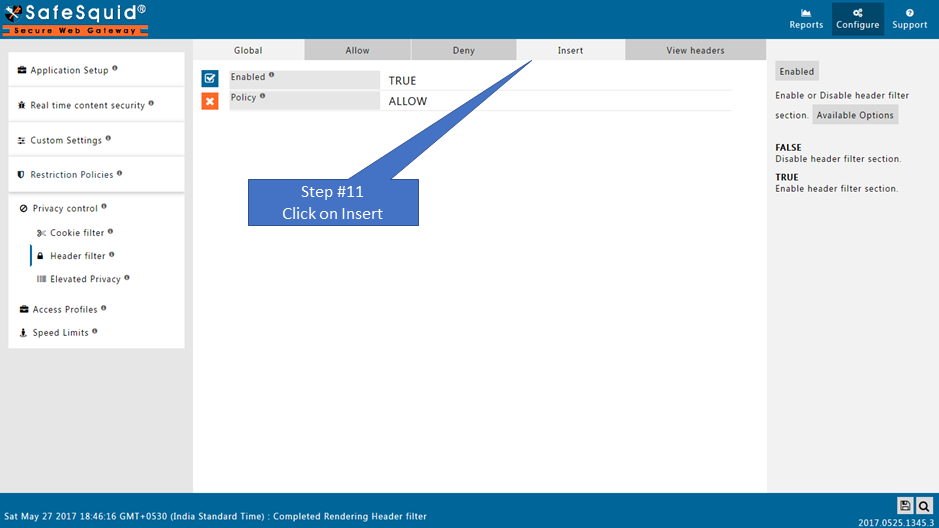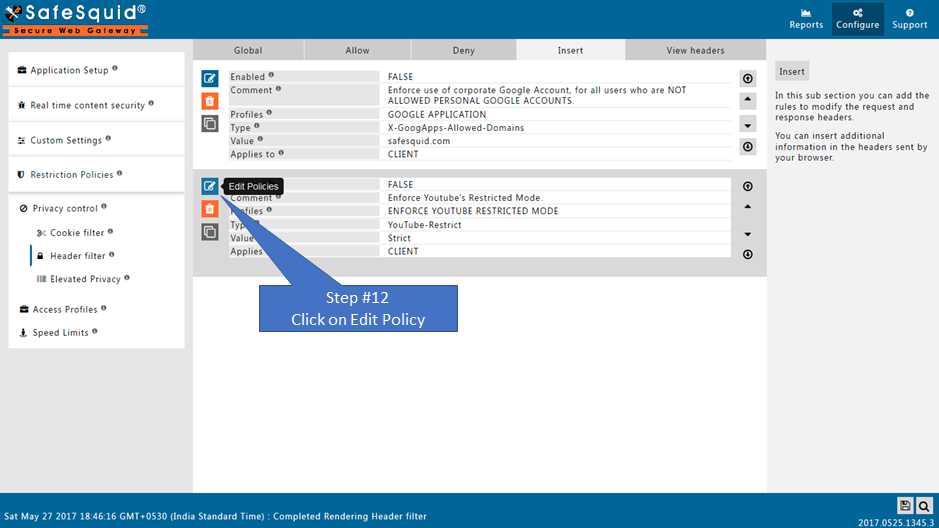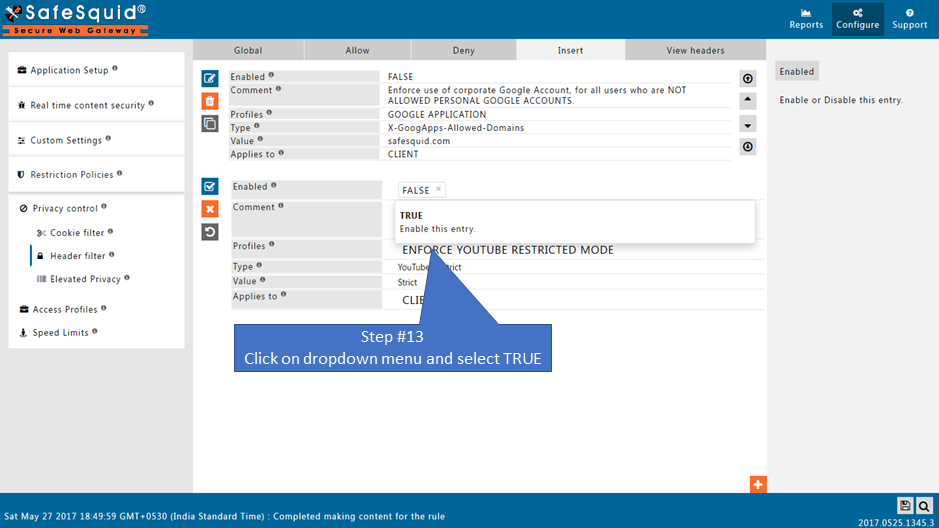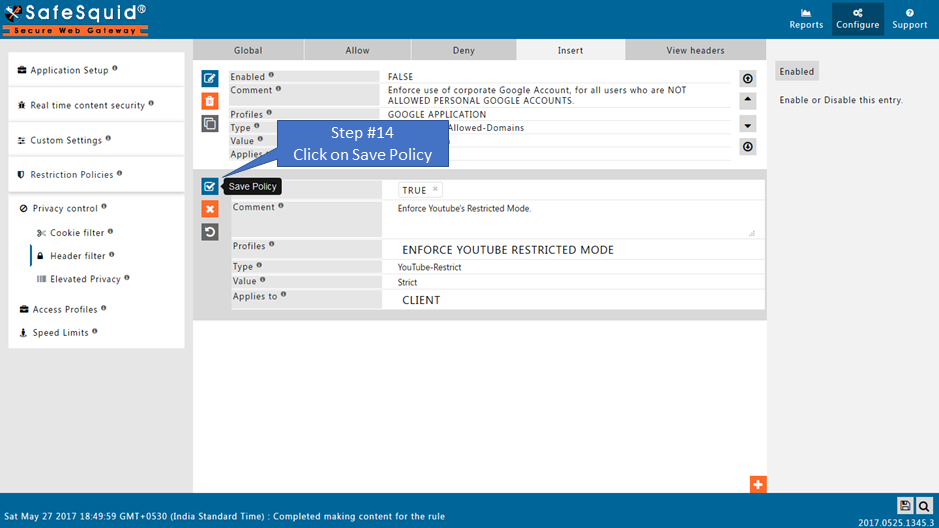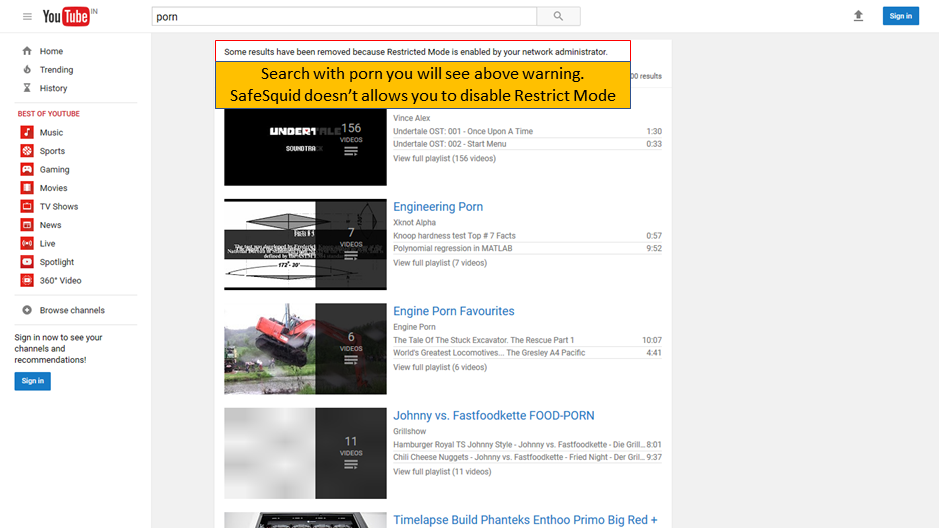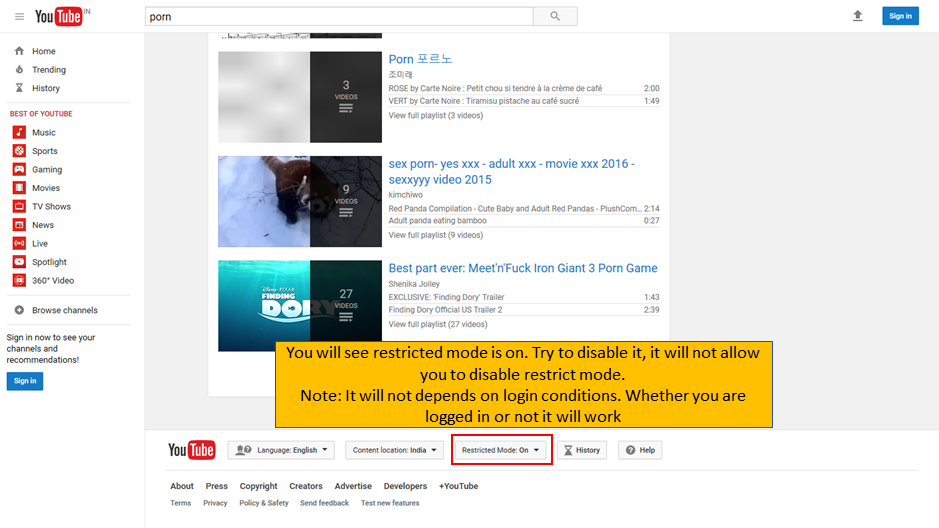Difference between revisions of "YouTube Safety Mode On Gateway"
en>Samidha12 (Created page with " == Overview == YouTube has countless hours of entertainment, videos, and TV shows to keep you and your network users entertained, but there is some content on YouTube that y...") |
m (1 revision imported: Importing all pages) |
(No difference)
| |
Latest revision as of 15:37, 24 July 2021
Overview
YouTube has countless hours of entertainment, videos, and TV shows to keep you and your network users entertained, but there is some content on YouTube that you may prefer not to see or don't want others in your network. YouTube offers what is basically a parental control feature called Restricted Mode, which effectively avoids most inappropriate and offensive video content on the YouTube service by filtering it out.
When implemented by YouTube, you can enforce content restriction features only for individual browsers or users. In large organizations, it is not possible to enable restrict mode manually for each user and there is a possibility that the user himself may disable the restricted mode.
SafeSquid provides an option to enable restrict mode on your gateway directly, and enforces the restricted mode on YouTube so that users not allowed to disable it. As YouTube supports HTTPS protocol, you need to enable HTTPS inspection on SafeSquid.
you can also define restrictions to particular users or for all users based on your network architecture.
When request comes to SafeSquid, for YouTube search then SafeSquid will add YouTube-Restrict : Strict header option in client headers. Then the server give the filtered response.
Prerequisites
HTTPS inspection ,must be enabled on SafeSquid if not see our document - How to configure HTTPS inspection
Here each entry explained comes with default configuration, if any of the default entries were not found then create the new entry.
Access the SafeSquid interface
Define entry for YouTube restrict mode
Go to configure page
|
|
||
|
Enable YouTube Restrict Mode entry in Policies and profiles |
||
|
|
This entry is applicable for all users, if you want to give exception to any users then add that user group with negation example !ADMINS
| |
|
|
||
|
Adding Strict header to client headersGo to Restriction Policies |
||
|
Go to Privacy control |
||
|
Go to Header filter |
||
|
Turn on header filter |
||
|
|
||
|
|
||
|
Go to insert sub section |
||
|
Enable restricted mode entry to add strict header |
||
|
|
||
|
|
||
|
Testing |
||
|
|
| |
|
Save Configuration |
Trouble shoot: | |
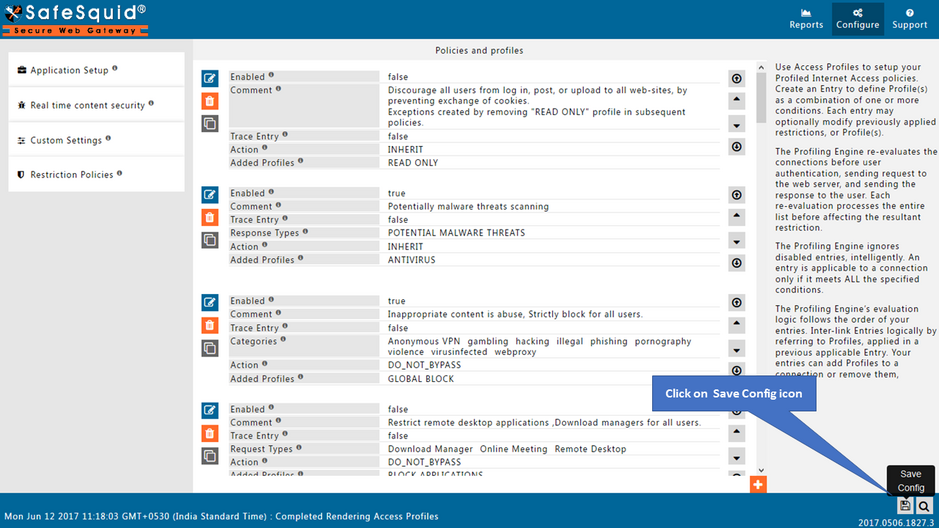
|
|
How To
